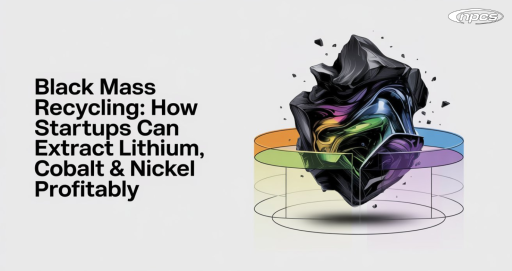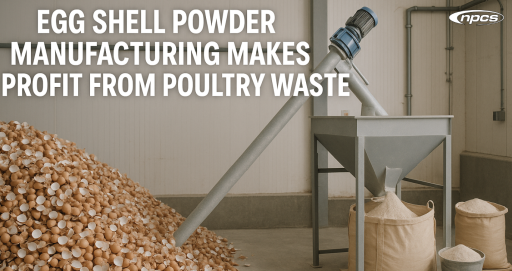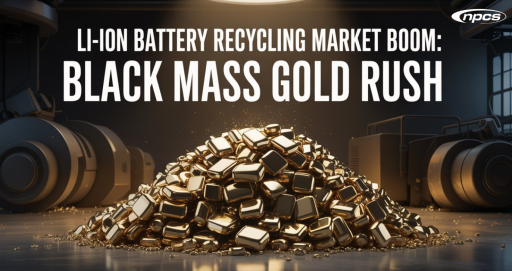The demand for electric vehicles and lithium-ion batteries is driving a quiet revolution in the field of black mass recycling. As the EV boom speeds up, so does the demand for sustainable sourcing of key materials including lithium, cobalt, and nickel. Black mass recycling is among the most creative and environmentally friendly ways to accomplish this. How can companies, though, profit from this thriving sector and transform garbage into riches?
Startups have a blueprint for entering this lucrative field as this article explores the possibilities, obstacles, and technologies behind lithium extraction from black mass.
What is Black Mass Recycling?
The term “black mass recycling” describes the extraction of priceless metals from crushed lithium-ion batteries. Processing these batteries leaves behind a fine, powdery material known as “black mass. ” Rich in precious metals including lithium, cobalt, and nickel, this material is
Companies can now extract metals from black mass, providing a circular, affordable alternative rather than mining for new materials which is both expensive and ecologically harmful. Innovative startups willing to tackle the problem of battery waste are finding a gold rush in this expanding market.
Why Lithium Extraction from Black Mass Matters
Given rising battery demand, conventional mining can no longer reliably fulfill the world’s need for lithium. This is where lithium mining from black mass comes in. It greatly lowers the carbon footprint and lessens our reliance on raw material mining.
Startups can reclaim lithium from discarded batteries to:
- Reduced operational expenses
- limit ecological footprint
- Fulfil ESG (Environmental, Social, Governance) criteria
- Get a regular supply of vital minerals.
Industry estimates say lithium mining from black mass can recover as much as 95% of usable lithium, therefore transforming energy storage systems.
How Startups Can Begin Black Mass Recycling
Startups looking black mass recycling need to tackle the chance with a methodical strategy:
1. Obtain a Reliable Supply Chain
The first stage is to form alliances with e-waste collection companies, recycling centers, and battery manufacturers. These partnerships can guarantee a consistent flow of battery trash the raw material for black mass recycling.
2. Select the Appropriate Technology
Lithium may be extracted from black mass using two basic methods:
- Though energy-intensive, pyrometallurgy uses heat to recover metals.
- Preferred by contemporary companies, hydrometallurgy is more environmentally friendly and involves using solvents.
Startups can keep more of the lithium and cobalt concentration thanks to more profitable and environmentally friendly hydrometallurgical techniques.
3. Travel Rules
Incentives and looser rules are helping governments to increasingly promote black mass recycling. Startups should make use of any tax incentives or subsidies and make sure they follow local environmental regulations.
Key Technologies in Lithium Extraction from Black Mass
To thrive in lithium extraction from black mass, startups have to acquire cutting-edge tools and methods. Among the most promising ones are several
- Direct Lithium Extraction (DLE) aims for high efficiency in lithium recovery.
- Membrane separation improves purity while lowering garbage.
- Solvent extraction is particularly successful in separating nickel and cobalt.
Adopting these can raise general profitability by improving metal recovery rates.
The Profitability of Black Mass Recycling
Black mass recycling’s commercial model is becoming more feasible owing:
- Rising demand for EVs: Growing demand for EVs guarantees a steady supply of end-of-life batteries.
- Increasing metal prices: Growing metal prices, especially cobalt and lithium.
- Government support: Many nations provide subsidies and green financing.
Startups can rapidly and profitably scale by combining these market dynamics. If maximally improved, a small-scale project with low overhead could produce returns within the first year.
Challenges to Overcome
Although there are great possibilities, black mass recycling presents particular difficulties:
- Large initial capital outlay
- Complicated processes of extraction
- Toxicity and management of dangerous garbage
- Large corporations’ market rivalry
Startups have to stand out by means of innovation, quality control, and sustainability.
Future Trends in Lithium Extraction from Black Mass
The technologies and methods pertaining to lithium mining from black mass will change as the markets for EVs and energy storage develop. Important trends comprise:
- Automations and artificial intelligence in metal recovery techniques
- Blockchain for supply chain exposure
- Green chemistry aims to cut harmful waste.
Companies that keep ahead of these trends will have a competitive advantage in global and local markets.
Conclusion
More than only a garbage management alternative, black mass recycling opens the path to sustainable riches. With the appropriate approach, technology, and partners, startups can head the charge in addressing one of the most urgent environmental problems while also generating good profit.
Lithium extraction from black mass will be pivotal in redefining the world supply chain as electrification and green energy take front stage in the coming years. Companies that act today stand a chance to be leaders in a fast expanding sector.
Some More Links
Join With Us
Niir Project Consultancy Services
Related Blogs
Start Lithium-ion Battery Recycling Business
Why Achieving High-Grade Lithium, Cobalt & Nickel
Join us on YouTube







